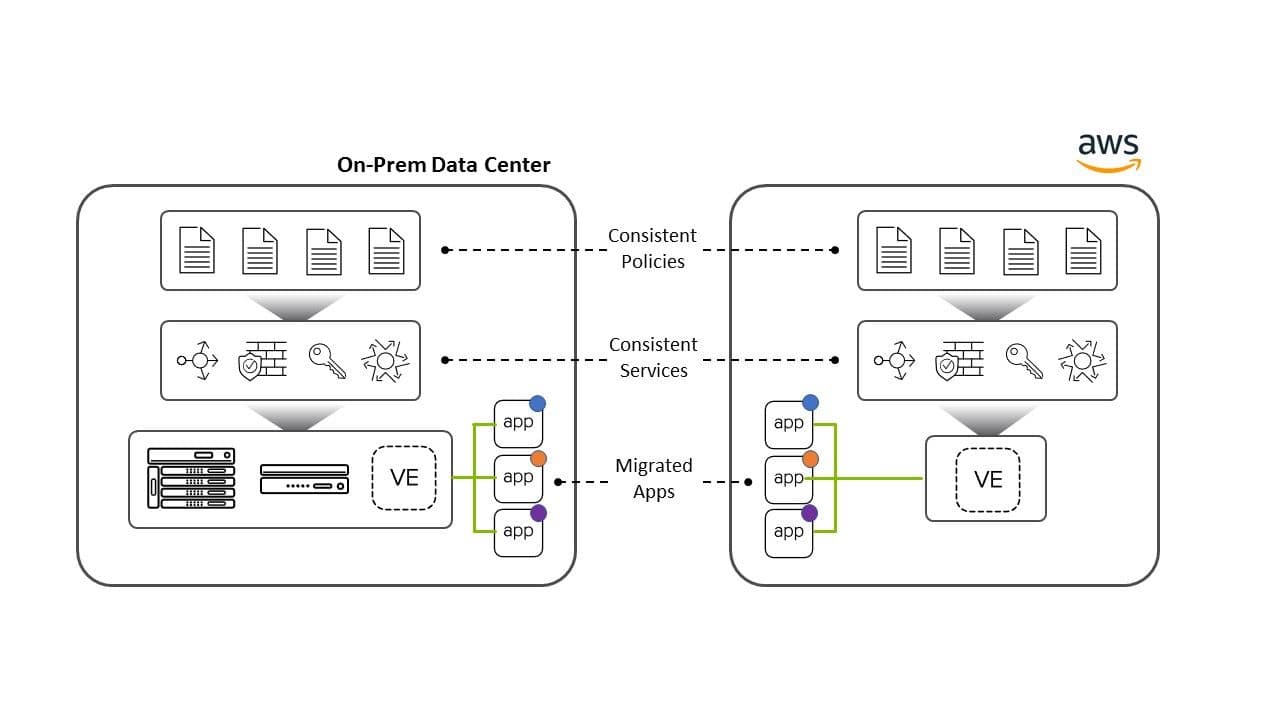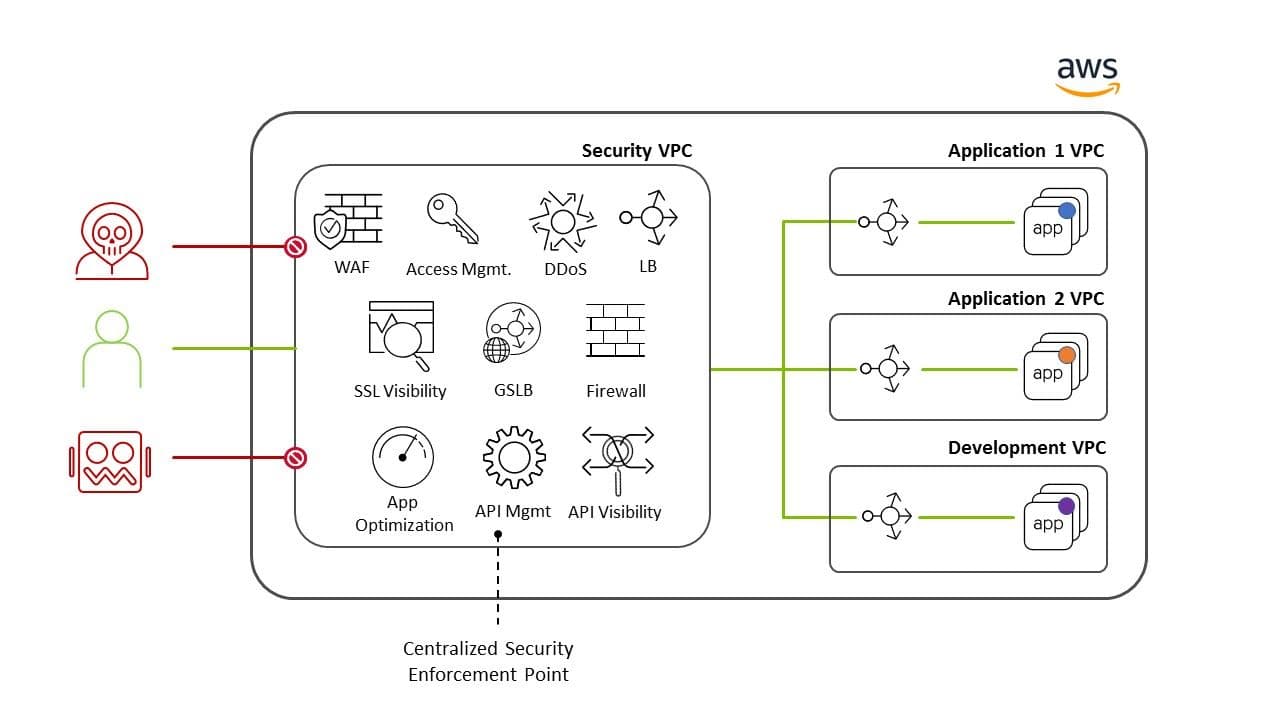December is nearly upon us which means it’s coming up to that time of the year again, that time when excitement and joy fill our hearts and cocktails fill our tummies. Yes—it’s almost time for AWS re:Invent…
60,000 people from across the entire spectrum of industries, roles, and geographic regions are expected to descend upon Las Vegas for a week of AWS innovation, education, and collaboration. And given that cloud strategies are comparable to winter snowflakes—in that they’re all distinct—this likely correlates to 60,000 ever-so-slightly unique motives for attending. That said, when discussing cloud plans with customers I’ve found that the vast majority are closely aligned to one (or more) of three common objectives. Those being:
1. Migrate – “We’re moving our apps to the cloud and modernizing them”
2. Build – “We’re developing new apps natively in the cloud”
3. Secure – “We’re looking to protect our cloud apps and environment”
Now this probably isn’t earth-shattering news to you. Yes, apps are migrating. Yes, new cloud apps are being developed. And, yes, security is important. But how is that relevant to F5 and how can we help you realize these goals? Let’s take a closer look.
1) Migrate with F5:
For teams responsible for the day-to-day operation of a company’s data center apps, ‘migration’ is not a word they likely want to hear very often. The task of uprooting applications that have in most cases lay dormant for years upon end, and replatforming them within a new cloud environment is unlikely to top their bucket list. Moving an application to the cloud, reconfiguring its supporting network infrastructure, and fronting it with unfamiliar application services is by no means easy.
Application migrations can however be simplified. By also transitioning a critical part of an application's support network—its application services—you can lessen the operational impact and learning curve associated with acquiring new tools and services, while also reusing existing configurations, policies, and iRules. The analogy I sometimes use compares it to offsetting the difficulty of your child’s first day at kindergarten by allowing them to take their worn-to-threads blanket—since you know they’ll likely have a torrid time without it. F5 app services can be that comfort blanket regardless of where you’re migrating apps to since they’re completely cloud-agnostic, meaning you can and utilize the exact same set of services to support apps anywhere, as depicted in the diagram below:

More information about the importance of policy consistency when migrating apps is available here.
2) Build with F5:
In today’sapplication economy, I can’t stress enough how critical your apps are to the success of your business. They say it only takes a tenth of second to form an impression about somebody—and apps are no different—so for your business’ sake it’s essential your user experience is second to none or you’ll likely lose customers and revenue. In order to build, deploy, and deliver great apps, two things are needed:
- Fast, innovative application development and deployment
- Unrivalled app performance backed by comprehensive security
As the application services leader, the second one is given with F5, and continued dedication to improving the way our services are consumed, implemented, and managed now empowers your DevOps and AppDev teams to spend more time building exceptional applications and significantly less time managing and deploying services. F5 gives you freedom of choice with cloud-focused solutions such as open source-supported (NGINX) and SaaS (F5 Cloud Services) technologies that are as fast and agile as your DevOps processes, leveraging declarative API’s to integrate with the CI/CD and automation tools you’re most familiar with. So whether you’re utilizing AWS EKS and a microservices architecture as the building blocks for the next Fortnite or refactoring a legacy app to add modern functionality, you’ll have the processes and services needed to do so quickly and securely. Intrigued? Here’s more information on F5’s integration within CI/CD pipelines, enabling container ingress, and automating app services insertion.
3) Secure with F5:
It’s no secret that AWS does an admirable job securing its physical cloud infrastructure and core network, but those security precautions account for very little where your apps and data are concerned, since application layer protection on AWS is still entirely your responsibility. Protecting your apps from sophisticated layer 7 threats is becoming increasingly more challenging as they continue to proliferate and expose new entry points, and as developers deploy them at an ever-increasing rate—often bypassing security and compliance requirements. Unsurprisingly, this makes it nearly impossible to ensure every app goes out with the appropriate security controls in place.

By entrusting F5 with your application and network security on AWS, you make a strategic investment that will protect your entire application portfolio against known, emerging, and future threats. Regardless of whether you’re targeted with injection attacks, automated botnets, or resource crippling denial-of-service attacks, you’ll be able to take comfort knowing that F5 will detect the threat, mitigate the threat, and then log and report it for further analysis. And by adding a centralized security enforcement point at the core of your cloud network, you’ll be able to apply consistent security policies for every app while empowering developers to innovate securely at the edge, supporting them in their pursuit of speed and agility.
F5 & AWS: A Strategic Collaboration Fueling your Growth
Since the inception of our partnership with AWS more than five years ago, we’ve gone above and beyond to ensure the success of our mutual customers throughout their cloud ventures. In that time, working closely with AWS we’ve delivered F5 Cloud Services (our SaaS platform leveraging the AWS SaaS factory), F5’s WAF rules for the AWS WAF, and a number of integrations with AWS native services including CloudFormation and Transit Gateway. Using such efforts as a foundation, we also recently announced a Strategic Collaboration Agreement with AWS to enhance customers' ability to leverage F5 SaaS and cloud-native services to migrate, build, and secure applications on AWS—while also accelerating future joint innovations. Needless to say, F5 and AWS form a coalition you can depend on for your current known (as well as future unknown) cloud requirements.
And finally, if anything above has piqued your interest, feel free to stop by our booth (#2437) at AWS re:invent and chat with our experts! Or if you’d like to hear first-hand from one of our customers about their experience with F5 on AWS, Bryan Yamanaka and Kolby Allen from Zipwhip will join F5’s Lori MacVittie to discuss their migration story: How Rapid Growth Accelerated Zipwhip’s Move to AWS
About the Author

Related Blog Posts

AppViewX + F5: Automating and orchestrating app delivery
As an F5 ADSP Select partner, AppViewX works with F5 to deliver a centralized orchestration solution to manage app services across distributed environments.

Build a quantum-safe backbone for AI with F5 and NetApp
By deploying F5 and NetApp solutions, enterprises can meet the demands of AI workloads, while preparing for a quantum future.

F5 ADSP Partner Program streamlines adoption of F5 platform
The new F5 ADSP Partner Program creates a dynamic ecosystem that drives growth and success for our partners and customers.
F5 NGINX Gateway Fabric is a certified solution for Red Hat OpenShift
F5 collaborates with Red Hat to deliver a solution that combines the high-performance app delivery of F5 NGINX with Red Hat OpenShift’s enterprise Kubernetes capabilities.
F5 Silverline Mitigates Record-Breaking DDoS Attacks
Malicious attacks are increasing in scale and complexity, threatening to overwhelm and breach the internal resources of businesses globally. Often, these attacks combine high-volume traffic with stealthy, low-and-slow, application-targeted attack techniques, powered by either automated botnets or human-driven tools.
Phishing Attacks Soar 220% During COVID-19 Peak as Cybercriminal Opportunism Intensifies
David Warburton, author of the F5 Labs 2020 Phishing and Fraud Report, describes how fraudsters are adapting to the pandemic and maps out the trends ahead in this video, with summary comments.
